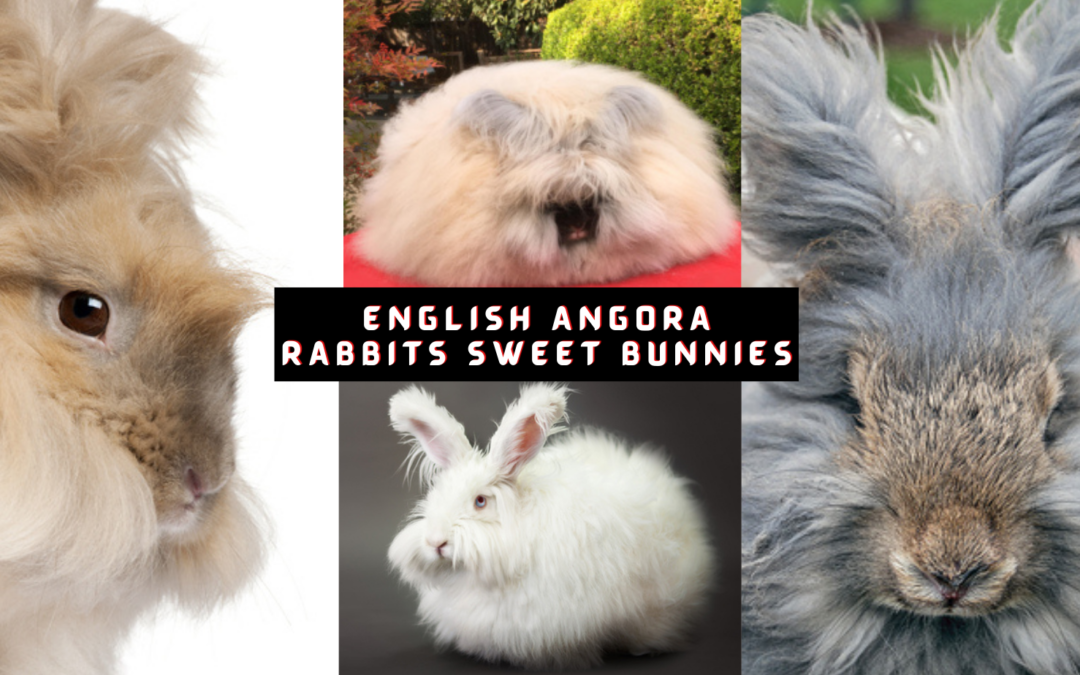English Angora rabbits are famous for their woolly coats and gentle personality. They are adorable pets and charming companions. However, these bunnies need to have someone who will groom them regularly. Because of their long, dense coats, they may suffer wool block and heatstroke.
This article will show you the benefits of having an English Angora rabbit in your home. If you plan to get one, you will know how to take care of it so it may grow healthy and happy. Keep reading to learn more!

English Angora mom and baby
Facts about English Angora Rabbits
| Body Size | Medium |
| Body Weight | 5 to 7.5 lbs. |
| Body Shape | Compact |
| Life Span | 7 to 12 years |
| Colors | Agouti, Broken, White, Self, Shaded |
| Rarity | Common |
| Similar Breeds | Satin Angora, French Angora |
| Best Suited for | Singles, Couples, and Families with Kids |
| Origin | Ankara, Turkey |

English Angora Rabbits can be playful
Background and History
Originating from Ankara, Turkey, Angora rabbits were famous for their long, woolly coats. Many rabbit owners bred them to spin their wool and turn them to warm and lightweight garments. Besides their wool, they also became popular pets to French royalties. They also paraded their beautiful coats at rabbit shows and exhibitions.
These long-haired bunnies arrived in the United States in the 1900s. However, all angora breeds were only categorized as “Angora rabbits” until the mid-1900s. In 1939, ARBA recognized the English and French Angoras. For the following years, the association acknowledged the Satin and Giant Angoras.
Out of eleven Angora rabbits, only four breeds have been recognized by ARBA. One of these is the English Angora. It is also one of the oldest types of domesticated rabbits. Unlike the other angora rabbits, English Angora has one bang and a furry face and ears. Its coat is also suitable for those allergic to goat and sheep’s wool.
Activists criticize the wool industry after a video of an Angora rabbit leaked. Its wool had been pulled forcefully, injuring its sensitive skin. Organizations like PETA discouraged people from buying Angora rabbits’ wool sweaters.
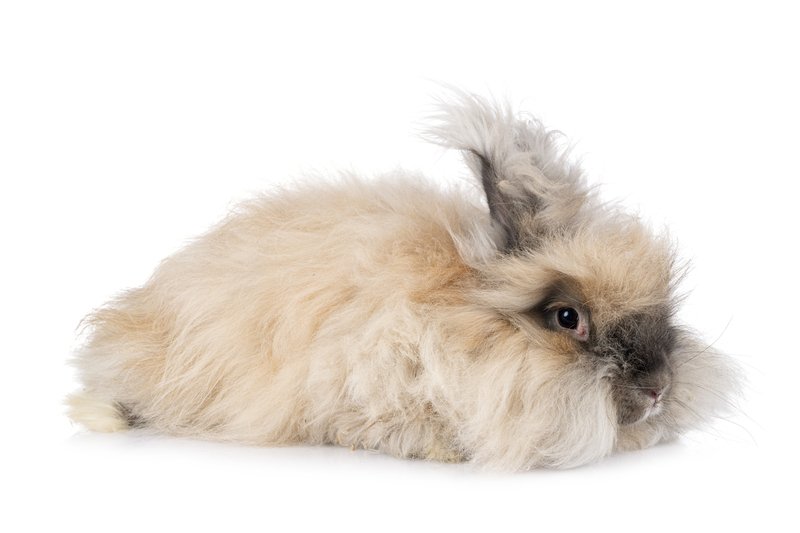
English Angora colors are impressive
Body Size
The Engish Angora is considered the smallest Angora breed since it can only weigh up to 5 to 7.5 lbs. It also has a short, compact body covered with long wool, making it look like a round, fluffy ball. The head of an English Angora is broad and flat, while its ears are in V-shape with tassels.
For rabbit shows, the minimum weight of junior bucks and does is 2 ¾ lbs. The maximum weight for the junior bucks is 5 ½ lbs, while 6 lbs for junior does. For seniors, the minimum weight is 5 lbs. The ideal weight for a buck is 6 lbs, while 6.5 lbs for a doe. In terms of the maximum weight, it is 7 lbs for senior bucks, and 7.5 for the senior does.
Regarding judging, 57 points go to the quality of the wool, such as its density, length, and texture. The 33 points are for the body type, ears, head, eyes, legs, and feet. The ears must be able to fold over at the tips, while the furnishings on the face must cover the eyes of the bunny. The toenails must only have one color. Five points each go to the color and the rabbit’s condition.
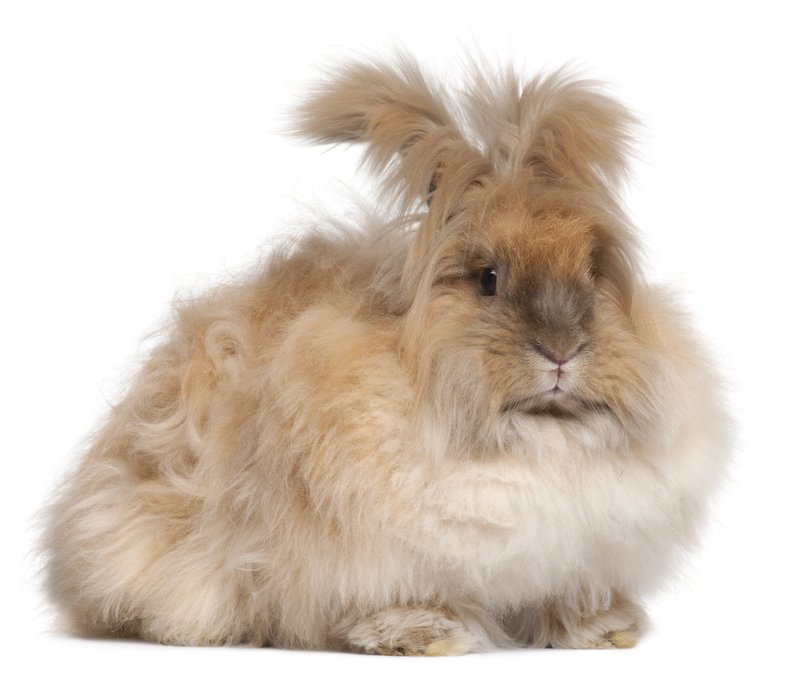
Coat
English Angoras look like puppies or teddy bears because of their woolly feet and furry face. They have thick coats that cover mainly their entire body. These bunnies have wools that are sought for spinning. Since their long coats are prone to tangling and matting, grooming them is essential. According to some breeders, they shear these rabbits’ coats four times a year.
Similar to other rabbits, English Angoras are available in a wide variety of colors. Their coats’ colors are divided into two classes: the white and the colored group. Here is a table showing the colors under the two classes:
Colored Group
| Categories | Colors |
| Agouti | Lynx, chestnut, chocolate, agouti |
| Self | Chocolate, black, blue, lilac |
| Shaded | Chocolate tort, black tort, lilac tort, blue tort |
White Group
| Categories | Colors |
| Self | Blue-eyed white (BEW), Ruby-eyed white (REW) |
| Pointed White | Chocolate pointed white, black pointed white, blue pointed white |
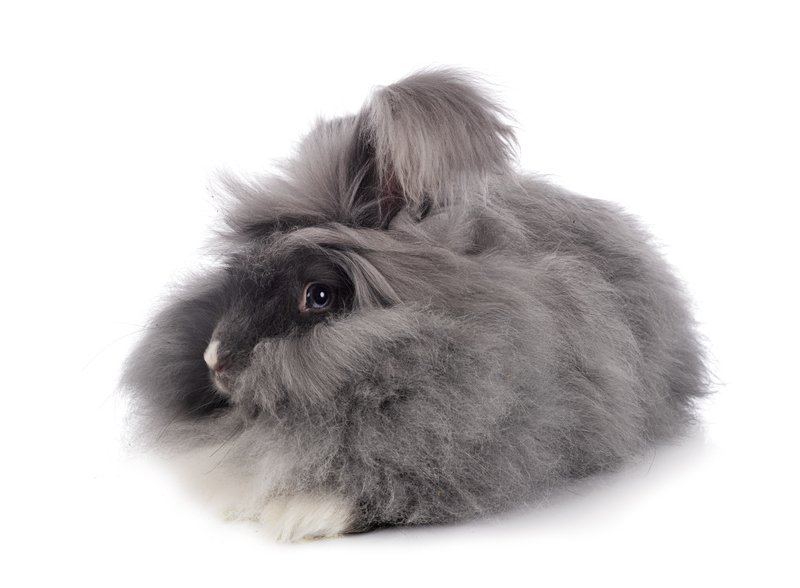
Beautiful coats with great care
Temperament and Behavior
Who wouldn’t love an English Angora rabbit? Besides its cuddly and charming face, it is also very gentle and friendly. Many adore them because they are even-tempered. These round, fluffy creatures don’t show any skittish behavior. Although they are very sociable, they don’t demand too much attention. That’s why they can thrive in a busy or laid-back household.
These creatures also love snuggling with their owners. They are also more affectionate to those who groom and feed them. Since they love to interact, they are ideal for singles and couples. You can also let them play with your kids because these pets are easy to get along with. However, English Angoras don’t like to be picked up, so warn your kids to prevent doing it.
Another lovable character of an English Angora is its intelligence. It loves to play with cat toys, so make sure to put them inside your rabbit’s cage. Treat your pet with care as much as possible because it can become fearful if mishandled.
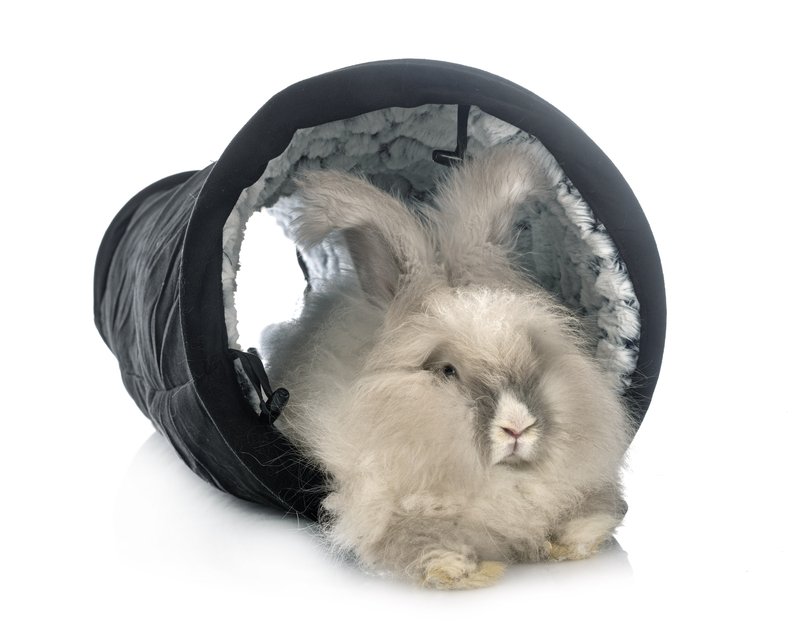
Playful, yet very sweet
Grooming English Angora Rabbits
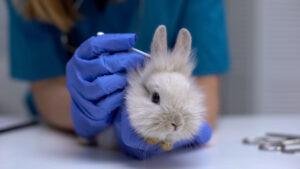
Because of their long wool, English Angora rabbits are more prone to matting and tangling. So, you must remember that grooming is crucial for these furry pets. You will know they are shedding if you notice that loose tendrils of fur are falling out. If the bunny is not shedding, you can groom it once a week for at least 30 minutes. But if it’s shedding, the grooming may take about 45 to 60 minutes.
Before grooming an English Angora bunny, you need the right tools. Some of them are a slicker brush, a grooming comb, and a pair of small blunt-end scissors. You need to use a slicker brush to remove the dirt, shavings, and leaves on the bunny’s coat. You need to brush only the tip of the fur. This procedure will only take you about two to three minutes.
Once done, use the grooming comb to remove the loose fur in your bunny’s coat. You must brush from the end of the skin to the end of the fur. Don’t forget to brush the furry ears and face. However, be careful when brushing the fur around the eyes. After completing this step, you must fix the mats on the rabbit’s coat.
Some of the matted areas include the English Angora’s legs, backside, and belly. In fixing the mats, avoid pulling the fur since rabbits have sensitive skin. Hold the fur close to the skin so you won’t have to apply too much force. If the mat is too hard, you must cut it off with scissors. Do the same procedure for felted fur or compressed and coarse fur.
Proper Diet

One of the essential parts of a bunny’s life is its diet. You can set a regular feeding pattern for your pet to ensure that you feed them daily. Feeding them twice or once daily is fine as long as you stick to the routine. Unlike other breeds, Angora rabbits need more attention on their diet.
Since angora rabbits are in the wool industry, they need proper nutrition. The nutritional requirements of Angora rabbits vary depending on their conditions. For instance, pregnant females need more protein than adult males and females.
Rabbits with harvested coats need more protein than those with longer coats. However, rabbits with full coats require more fiber than those with harvested coats. You must also give more high-energy foods to rabbits during winter.
For an organic diet, you must give your rabbit at least one cup of fresh greens or herbs daily. Don’t forget to feed fresh hay and supply unlimited clean water to your bunny. You can also include dry food to add nutrients and minerals. However, be careful in choosing commercial dry rabbit foods. They have to meet your bunny’s nutritional requirements.
Habitat
Since English Angora rabbits are playful, they need a large enclosure where they can play. Ensure the hutch is big enough for the bunny to hop, run, and stretch out comfortably. In addition, the cage must have a sleeping house, hay rack, food bowl, water trough, and litter.
Never let an Angora rabbit stay outside the house since its skin is sensitive to cold weather. In summer, place the hutch in a shady spot to protect the bunny from the scorching heat. You must also ensure the cage is sturdy enough to withstand strong winds. It must also keep the bunny safe against predators.
Health Issues of English Angora Rabbits
Wool Block
The most common health issue experienced by English Angora rabbits is wool block. As they groom themselves, these bunnies ingest some of their wool. Unlike cats, rabbits can’t vomit. As a result, the wool stays in their stomach, affecting their digestion and overall health.
Some wool block symptoms include loss of appetite and small or no droppings. If you notice these symptoms, you must remove pellets from your rabbit’s diet. Stick to hay in the meantime while giving fresh papaya and pineapple juice to your pet. Don’t forget to bring your bunny to the vet.
As they say, prevention is better than cure. A wool block is a fatal condition, so you would want to avoid it as much as possible. To prevent your bunny from suffering from a wool block, you must provide it with a high-fiber diet. Giving papaya tablets or pineapple juice to your bunny once a week helps digestion. Above all, you must observe proper and regular grooming.
Heat Stroke
Another condition that Angora rabbits may experience is heat stroke. Since they have long, thick wool, their body warms faster than other breeds. The ideal temperature for an Angora rabbit is 50 to 70 F. If it’s more than 70 F outside, it is not wise to let your rabbit roam outdoors. Ideally, English Angora rabbits must be kept indoors.
Here are the signs of heatstroke:
- Warming and reddening of the ears
- Difficulty breathing
- Lethargic behavior
- Unconsciousness
- Drooling
- Wetness around the nose
If your bunny suffers from heatstroke, you must bring it to the vet immediately. There are also things that you can do to cool down your pet. However, you must do them slowly to prevent worsening the situation. Some of these are putting a wet towel on the hutch, wiping cool water on its ears, or giving it small amounts of water.
Frequently Asked Questions
Are English Angora rabbits good household pets?
Absolutely! Because of their gentle character, English Angoras can get along with their owners. They also don’t demand too much attention; however, they would love to spend time with you. But if you are planning to get this bunny, ensure that you can give it the care and time it needs for grooming.
What is the average cost of an English Angora rabbit?
The average cost of an English Angora rabbit may range from $50 to $250. As expected, English Angora rabbits that can qualify for rabbit shows are more costly. You must get only to the respected and registered breeders to ensure good quality. If you want to save money, you may wish to visit rescue homes for bunnies.
What are the monetary benefits of breeding English Angora rabbits?
If you want to earn money from an English Angora rabbit, some sell its raw fiber for $6 to $8 an ounce. Since its wool is also suitable for spinning into yarn, you can use it for doing other crafts like fiber arts. The last option is collecting its manure which often sells at a premium price due to its value as a fertilizer.
However, keep in mind that you won’t actually earn a big income from such products. Consider them more of a means of buying a little extra food or a new toy occasionally. The amount of wool from one rabbit is quite minimal, as is the waste accrued.
Intrigued by the English Angora Rabbit Breed?
English Angora rabbits have a wooly style that catches the eyes of breeders and fanciers. Although this breed is sociable, it needs owners who can give time and attention to grooming its coat. Unlike other rabbits, an English Angora’s diet may vary depending on its situation. However, taking care of this breed is highly satisfying.

Read More

